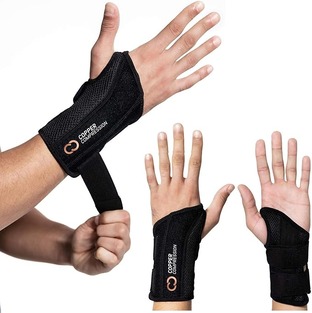Wrist braces are like superheroes for your wrist! They’re special tools that help your wrist feel better when it’s hurt and keep it safe from getting hurt again. Let’s learn all about why wrist braces are awesome, what they do, and how they help you.
What is Wrist Brace Support?
Wrist brace support is like giving your wrist a gentle hug with a special bandage or wrap. These hugs are made just for wrists and come in different shapes and sizes, like wraps or splints. They’re like a cozy blanket for your wrist, giving it support and keeping it in the right position so it can heal.
What Does a Brace Do for Wrist Support?
Think of a wrist brace as a bodyguard for your wrist. It’s there to keep it safe from any bad moves that might hurt it more. By stopping certain movements, like bending or twisting, the brace helps reduce pain and make your wrist feel better. It’s also like a buddy that helps weak or hurt parts of your wrist stay strong and heal faster. And just like a shield, it protects your wrist from bumps and knocks when you’re playing or doing activities.
What Are the Benefits of Using Wrist Braces?
Using a wrist brace is like having a superpower against wrist pain and injuries. Here are some of the cool things it does:
- Makes Pain Go Away: Wrist braces are great at making pain disappear by keeping your wrist still and comfy.
- Helps Your Wrist Heal: By keeping your wrist still or limiting its movements, braces let your body work its magic and fix any boo-boos inside.
- Keeps Your Wrist Steady: If your wrist is wobbly or feels weak, a brace can give it the support it needs to stay strong and steady.
- Stops Injuries from Coming Back: Wearing a wrist brace lowers the chances of hurting your wrist again, especially if you do lots of things that use your wrist a lot.
- Fixes How You Stand: Some braces help keep your wrist in a good position, which can be a big help if you have problems like carpal tunnel syndrome or tendonitis.
- Makes You Move Better: When you’re getting better after being hurt, a wrist brace helps you do things like writing, typing, or playing without any problems.
Common Wrist Injuries
Wrist injuries are like puzzles that need solving so you can feel better. Here are some of the most common ones:
- Sprains: When the bands that hold your wrist together get stretched or torn from a sudden twist or hit.
- Strains: Happens when your wrist muscles or tendons get stretched too far from doing the same motion over and over again.
- Carpal Tunnel Syndrome: Your wrist’s tunnel gets squished, squeezing a nerve and causing pain, tingling, or numbness in your hand.
- Tendonitis: Swollen tendons from doing the same movements too much, like typing or playing sports.
- Fractures: When your wrist bones break from a fall, sports, or accidents.
- De Quervain’s Tenosynovitis: Swelling and pain on the thumb side of your wrist from overusing it.
Additional Tips for Wrist Injury or Recovery
Here are some other things you can do to help your wrist feel better:
- Take a Break: Let your wrist rest and don’t use it too much. Sometimes a little vacation from activities that make it hurt can help it heal.
- Exercise Your Wrist: Doing special exercises with a doctor or therapist can make your wrist muscles and tendons stronger and more flexible.
- Make Things Easier: Changing how you do things, like how you sit or type, can give your wrist a break and stop it from getting hurt again.
- Use Medicine Wisely: If your wrist hurts a lot, your doctor might give you special medicine to make it feel better. Just be sure to follow their advice on how much to take.
- Find the Perfect Brace: Pick a wrist brace that fits you just right and does what you need it to do. Your doctor can help you choose the best one for you.
- Take It Easy: When you start doing things again after being hurt, take it slow. Your wrist needs time to get used to being active again without getting hurt.
In short, wrist braces are like magical helpers that make your wrist feel better and keep it safe. They’re not just for when you’re hurt but also for when you’re getting better or want to avoid getting hurt. With a little help from a wrist brace and some smart choices, you can keep your wrist happy and ready for anything!

